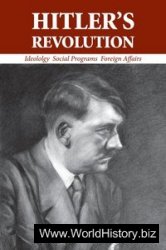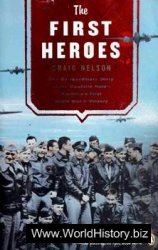Native societies elsewhere were substantially different. Two major groups dominated eastern Canada. The Iroquoian-speaking people who lived in what is now southern Ontario and around the St. Lawrence had well-developed farming methods that enabled thousands of people to live together in small areas and to develop complex political systems. The Iroquoians spoke various dialects and formed several separate and often mutually hostile nations, including the Five Nations or “Iroquois Confederacy” (consisting of the Seneca, Cayuga, Oneida, Onondaga, and Mohawk) and the Huron, the Erie, and the Neutral. These nations dealt with each other through networks of kinship, rivalry, war, and trade. The northern Iroquoians exchanged their surplus corn for the products of the Algonquians’ hunting. The amounts were small, but the routes and methods of trade were well established, and goods and information were exchanged along them long before the Europeans and their goods entered the scene.
In sharp contrast to their Algonquian-speaking neighbours to the north and east, who had no permanent settlements and moved constantly from one hunting ground to the next, the Iroquoians were village dwellers who depended on the produce of their carefully tended fields. The Huron, for example, obtained as much as 75 per cent of their food by farming; they ate primarily corn, beans, squash, and sunflowers—supplemented with fish, particularly whitefish, and game, mostly venison. Before the arrival of the Europeans the Iroquoian-speaking Huron, Hochelagans, and Stadaconans were the northernmost farmers in North America, living as they did at the outer climatic limits of agriculture.
Iroquoian villages contained as many as two thousand inhabitants and were located close to the fields. A new village site was sought only when all the conveniently accessible land had been used up in the course of field rotation—a farming practice made necessary by the slash-and-burn method they used, best described in the first-hand account of Recollet lay brother Gabriel Sagard:
Clearing is very troublesome for [the Huron], since they have no proper tools. [The men] cut down the trees at the height of two or three feet from the ground, then they strip off all the branches, which they burn at the stump of the same trees in order to kill them, and in the course of time they remove the roots. Then the women clean up the ground between the trees thoroughly, and at distances a pace apart dig round holes or pits. In each of these they sow nine or ten grains of maize, which they have first picked out, sorted, and soaked in water for a few days, and so they keep on until they have sown enough to provide food for two or three years, either for fear that some bad season may visit them or else in order to trade it to other nations for furs and other things they need; and every year they sow their corn thus in the same holes and spots, which they freshen with their little wooden spade, shaped like an ear with a handle at the end. The rest of the land is not tilled, but only cleansed of noxious weeds, so that it seems as if it were all paths, so careful are they to keep it quite clean; and this made me, as I went alone sometimes from one village to another, lose my way usually in these corn-fields more than in the meadows and forests.
Fishing and hunting were largely male activities—fishing the more significant because fish provided the major source of protein. For the Huron, who occupied what is now northern Simcoe County in Ontario, the major fishing expedition was the monthlong autumn one to Georgian Bay to obtain spawning whitefish. The Stadacona, who lived near present-day Quebec City, took mackerel, seal, eel, and porpoise from the Gulf of St. Lawrence. They differed from the other Iroquoians in that they developed a strong connection with the sea. Between planting and harvest they would venture as far as the Gaspe peninsula and the Strait of Belle Isle on fishing, sealing, and other food-collecting expeditions. Unlike the male-dominated autumn fishing trips of the Huron, men, women, and children all joined in these summer voyages.
Although the hunt provided less food than farming or fishing, it was important because hides and pelts were needed for clothing. Given the relatively close populations in the settled areas of Iroquoian territory, game and fur were in short supply, so hunting parties were forced to travel considerable distances in search of their prey. The Huron, for example, mounted autumn and late-winter deer-hunting expeditions, usually of several hundred men, that took them on lengthy journeys south or east of their homes. Taking advantage of the fact that white-tailed deer gathered in herds in these seasons, the Huron men built V-shaped deer hedges 2.7 metres (9 feet) high and about half a mile long. Driven up against the hedges, the deer were slaughtered in considerable numbers. During the late-winter hunt, a few women would accompany the men to assist with the butchering and preparation of hides. Because venison did not preserve well (some was smoke-dried), most of the meat obtained on the deer hunts was eaten immediately. But the fat and the hides were brought home to the villages. Indeed, in order to stockpile provisions, the Iroquoians had developed various means of food preparation and storage. Women dried the produce of the fields and stored it
In porches or hung it from the ceilings of their dwellings. They either sun-dried or smoked their fish and then packed them in bark containers.
Probably the most striking difference between the northern hunters and the more southerly farmers was the type of dwelling the Iroquoians lived in, for they were the people of the longhouses. A typical Huron house was up to 30 metres (100 feet) long and 7.5 to 9 metres (25 to 30 feet) wide. It was constructed on a frame of poles sunk into the ground around the outer perimeter, bent and tied together in the centre, and covered with bark, usually cedar. Enclosed porches were built at one or both ends of the longhouse to store food and firewood, and inside a raised platform was built around the walls. Near the centre, storage racks were lashed to large poles, and here the inhabitants placed pots, clothing, and other possessions. Also down the centre was a row of hearths about 6 metres (20 feet) apart. In the larger villages, the houses were surrounded by palisades of interwoven stakes for defence.
Besides building larger and more permanent dwellings than the northern hunters, the Iroquoians constructed more substantial canoes for trade, war, and fishing—craft capable of transporting five or six men and their possessions over the rough, deep waters of Georgian Bay and the larger rivers. It appears that such Iroquoian-speaking people as the Huron engaged in regular trade with their neighbours before the European intrusion. There was a solid basis for such exchange, because they produced sizeable surpluses of corn but fur and game were in short supply in the immediate vicinity of their villages. Their northern neighbours prized corn and usually had furs to exchange—pelts which were superior because of the harsher climate of the

In the lower centre of La Terra de Hochelaga nella Nova Francia (1556), by Giovanni Battista Ramusio, Jacques Cartier and his men are being welcomed at the entrance of the Iroquois village of Hochelaga (Montreal) at the beginning of October 1535.
The village is portrayed imaginatively. Iroquoian settlements lacked this geometric regularity.
Northern forests. So it is not surprising that by the time the Europeans arrived among them a lively trade was already being conducted. Corn, tobacco, and nets figured prominently in the outbound traffic from Huronia, situated on the southern shores of Georgian Bay; furs, dried fish, meat, and winter clothing made their way in.
The Huron were also interested in trade for other reasons. They gathered around them more possessions than their Algonquian neighbours—partly as a result of their more sedentary lives—and although they discouraged acquisitive behaviour by individuals, each kinship group sought possessions collectively in order to maintain or elevate its status. This was done by redistributing wealth—obtained primarily through trade—to other members of the society at large. Understandably, such trading connections were jealously guarded by the kinsmen who had either developed or inherited them. Generally, the group whose members first developed a given trading route held the rights to it, but they could lease these rights or transfer them to other groups.
The longhouse society was complex and highly organized compared to the nuclear family of the Algonquian - and Athapaskan-speaking peoples. In the long-house lived an extended family which consisted of a woman and her daughters, or a group of sisters, together with their husbands and their children. Descent was traced on the female side, and the family usually chose to remain in the mother’s house.
Political life was organized around the dan, which was made up of all those extended families in a village who claimed descent from a common female ancestor.

Huron Deer Hunt. Although the deer hedge is portrayed as it might look if a European farmer had built it, the engraving does indicate how the deer were killed with spears and snares near the opening of the hedge. After a drawing by Samuel de Champlain (Paris, 1632).
Depending upon the size of the village, one or
Several different lineages might be present, and each lineage bore the name of one of the tribe’s clans: Bear, Hawk, Turtle, etc. In the larger villages longhouses belonging to families of the same clan tended to be clustered together. Even people living in different villages but bearing the same clan name recognized a symbolic affinity towards each other, although marriage between clan members was prohibited.
Each clan had two headmen—a civil leader and a war leader. Of the two, the civil leader was considered the more important, and he dealt with all aspects of daily life. The war leader, or war chief, was held in high regard only in times of conflict. It was then his responsibility to organize raiding parties in the blood feuding that was common with villagers beyond Huronia to the south, particularly those living south of Lake Ontario. Generally, war parties made up of the fellows of fallen kinsmen would raid opposing villages to seek revenge. Conflict was more or less continuous, but relatively few deaths resulted from the fighting. Instead men, women, and children were taken captive, and the tendency was to torture the men and adopt the women and children to replace members from the captors’ ranks. Certainly, annihilation of villages and groups was not normally the objective before the Europeans appeared.
Village councils made up of the civil heads of the various clans managed the daily affairs of the settlements. One of these councillors acted as the village spokesman but all the civil leaders were of equal rank, and they did not have to accept the decisions of their fellow councillors. Village administration was accomplished through consensus politics; besides civil leaders, old men who were respected for their wisdom attended village council meetings and took part in discussions. Councils arranged public functions, co-ordinated community building projects, and adjudicated disputes.
Each Huron village belonged to one of five different tribes, which together formed the Huron Confederacy. Each tribe controlled a portion of Huron territory, administered by a tribal council of civil leaders from the villages in that area. As with village councils, all tribal councillors were of equal rank, but only one acted as a spokesman for the group. Each tribal councillor had certain hereditary responsibilities, such as protecting the trade routes of his lineage. Tribal councils were chiefly concerned with inter-village and inter-tribal affairs. Overarching the tribal councils was the Confederacy, which apparently included all the members of the respective tribal councils. The Huron Confederacy attempted to maintain friendly relations among its five tribes, and co-ordinated trade and military affairs. Such diplomatic and political negotiations cannot have been easy, but clearly the organization of the Huron enabled them successfully to manage the affairs of a substantial population—

These two watercolours—Dance for the Recovery of the Sick and Calumet Dance—are from a series of sketches of Iroquoian dances and ceremonies by George Heriot, a Quebec-based painter, author, and postmaster (1766-1844). A calumet is a peace pipe.
Some twenty-five thousand in the early seventeenth century—before Europeans caused extraordinary disruptions with which they were unable to cope.
Huron life was filled with public and private celebrations. The largest feasts were held at the time of the annual meeting of the Confederacy council and at the investiture of new leaders. Men and women also organized feasts to commemorate a variety of important personal events, and in general celebrations were a lively time of dancing, games, and eating. The most important of all Huron ceremonies was the Feast of the Dead, ten days of pomp and feasting held whenever a village changed location. Brother Sagard recorded this ceremony in great detail, though it is evident from the list of goods put into the common grave that European influence had already changed Huron life:
The other neighbouring tribes are notified in order that those persons who have chosen that town to be the burying place may bring [their dead] thither, and others who wish to come out of respect may honour the festival with their presence. For all are made welcome and feasted during the days that the ceremony lasts____
The grave is dug outside the town, very large and deep, capable of containing all the bodies, furniture, and skins offered for the dead. A high scaffolding is erected along the edge, to which all the bags containing bones are carried; then the grave is draped throughout, both the bottom and the sides, with new beaver skins and robes; then they lay in it a bed of tomahawks; next kettles, beads, necklaces, and bracelets of wampum, and other things given by the relations and friends. When this has been done the chiefs, from the top of the scaffold, empty and turn out all the bones from the bags into the grave upon the goods, and they cover them again with other new skins, then with tree-bark, and after
That they put back the earth on top, and big pieces of wood____Then they have a feast again,
And take leave of one another, and return to the places whence they came, with great joy and satisfaction at having provided the souls of their relatives and friends with something that day to plunder and wherewith to become rich in the other life.
Sagard also grasped the fact that the Feast of the Dead played an important role in Huron society: “by means of these ceremonies and gatherings they contract new friendships and unions amongst themselves, saying that, just as the bones of their deceased relatives and friends are gathered together and united in one place, so also they themselves ought during their lives to live all together in the same unity and harmony.”
A rich spiritual world infused life. Uppermost in the Huron pantheon was the sky spirit who controlled the weather and helped human beings when they were in need; lesser spirits, the Old, had the power to influence human beings. All Iroquoians called on this spirit world to assist them in their economic and military endeavours, but they were also very concerned with obtaining spiritual help to combat illness. The Huron, for example, believed there were three major reasons for sickness—natural causes, witchcraft, and the unfulfilled desires of a person’s soul—and they turned to spiritual healers and curing societies to deal with these problems. Since dreams were regarded as the language of the soul, the shamans paid particular attention to them when treating patients—by taking appropriate ritual action, they were able to deal effectively with common emotional problems. The healing ceremonies were often, in essence, a kind of individual and group psychotherapy.




 World History
World History









